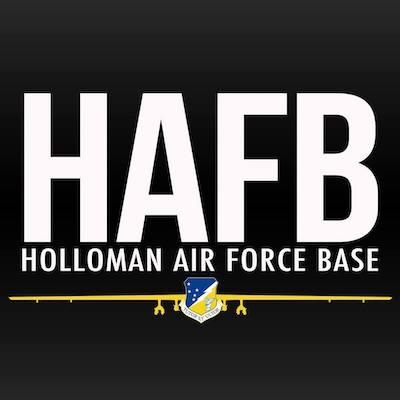Existing MOAs Were Developed For Legacy Aircraft More Than 30 Years Ago
One of the primary missions at Holloman AFB is to train F-16 pilots. The F-16 pilot training syllabus requires that pilots accomplish a series of training missions in a specific order. Each training mission must occur in airspace that is appropriately sized and approved for the training activity. When appropriate airspace is not available at the required time, training is delayed, increasing training expenses and disrupting pilots’ progress in the program. Incomplete training causes reductions in the number of qualified pilots ready to conduct combat operations.

The existing training airspace in southern New Mexico was developed for legacy aircraft more than 30 years ago. Most of the airspace has not evolved with the technology and capabilities of the F-16 aircraft. The existing training airspace, including Military Operations Areas (MOAs) and overlying Air Traffic Control Assigned Airspace (ATCAA), do not have the optimum volume, proximity to the base, or attributes to efficiently support the training mission of today’s fighter aircraft.
The Air Force is proposing to change existing MOAs or create new MOAs in southern New Mexico to support F-16 training activities including:
- Nonhazardous military aircraft training such as air combat maneuvers, air intercepts, and basic fighter maneuvers
- Use of chaff and flares with restrictions
- Limited supersonic flight above 30,000 feet
- Return underutilized MOAs to the National Airspace System
The Air Force evaluated several alternatives to determine which ones met the selection criteria. To be considered, alternatives had to meet the following criteria:
- Utilize Air Force scheduled airspace
- Maximize training time/minimize transit time
- Meet airspace size and configuration requirements
- Modifications would have limited impacts to civil aviation
Based on these criteria, three action alternatives were identified to be evaluated in detail in the EIS. The No Action Alternative is also addressed. A full description of the Alternative Selection Process as well as detailed descriptions of the Alternatives is available at the FMI link below.
No Action Alternative:
There would be no airspace modifications in support of F-16 training missions at Holloman AFB. The Air Force would continue to use existing training airspace as it does currently. The pilot training program would continue to have disruptions and delays in producing pilots ready for combat. This alternative does not meet the selection criteria or the purpose and need but is carried forward in accordance with NEPA regulations.
Alternative 1: Talon MOA
- Talon MOA would be reconfigured and expanded to the south and east. Airspace changes include:
- Low A, B MOAs 500 to 12,500 feet
- High A, B, C MOAs 12,500 to 18,000 feet
- ATCAA above MOA expanding training airspace when required
Operations in the MOA:
- Up to 10,000 sorties annually (3,700 in Low MOAs, 6,300 in High MOAs/ATCAA)
- Approximately 10% of sorties would include supersonic flight (in ATCAA, above 30,000 feet)
- Chaff and flare use with restrictions
Alternative 2: Cato/Smitty and Lobos MOAs
The Cato MOA and overlying Smitty MOA would be reconfigured and expanded to the southeast and Lobos MOA, would be created. Airspace changes include:
- Smitty MOA 500 to 13,500 feet (same as current)
- Cato MOA 13,500 to 18,000 feet (same as current)
- Lobos Low MOA 500 to 13,500 feet
- Lobos High MOA 13,500 to 18,000 feet
ATCAA would be assigned above the MOAs to expand training airspace when required Christa and Kendra ATCAAs to act as temporary bridges to restricted areas above White Sands Missile Range.
Operations in the MOAs:
- Up to 9,100 sorties annually (3,600 in Lobos Low and Smitty MOAs and 5,500 in Lobos High and Cato MOAs/ATCAAs)
- Approximately 10% of sorties would include supersonic flight (in ATCAAs above 30,000 feet)
- Chaff and flare use with restrictions
Alternative 3: Talon, Cato/Smitty and Lobos MOAs
Combination of Alternatives 1 and 2 with the following exceptions:
- Talon High MOA would be smaller
- There would be no Lobos Low MOA, only High MOA
- Would split aircraft operations and chaff and flare use among all MOAs
- Talon - 2,600 in Low MOAs, 4,200 in High MOAs/ATCAAs
- Cato/Smitty and Lobos - 1,100 in Smitty MOA (low), 2,100 in Cato, Lobos High MOAs/ATCAAs
(Source: Holloman AFB Environmental Assessment. Image from Facebook)
 Bolen Gives Congress a Rare Thumbs-Up
Bolen Gives Congress a Rare Thumbs-Up The SportPlane Resource Guide RETURNS!!!!
The SportPlane Resource Guide RETURNS!!!! Buying Sprees Continue: Textron eAviation Takes On Amazilia Aerospace
Buying Sprees Continue: Textron eAviation Takes On Amazilia Aerospace Hawker 4000 Bizjets Gain Nav System, Data Link STC
Hawker 4000 Bizjets Gain Nav System, Data Link STC Echodyne Gets BVLOS Waiver for AiRanger Aircraft
Echodyne Gets BVLOS Waiver for AiRanger Aircraft



